There were no new babies born overnight, but around noon today I found a broken open Coronation Sussex egg. The embryo inside was well developed but still had a lot of yolk, so I know it wasn’t ready to be born. It was the egg that Dahlia chucked out of the nest on the first day of the hatch. Perhaps she did that because the embryo had died, or maybe it was out of the nest long enough to chill and stop developing. We’ll never know.
There was a Black Copper Marans egg in the process of hatching under Dahlia. It seemed to be struggling a bit, but I left it alone. When I came back hours later there was a new chick.
Once the chick had dried, I inspected it. Unfortunately it was born with a severe birth defect. It has only one eye, and its beak is misaligned.
I suspect that there is no sight in its one eye, as it struggles to open that eye and doesn’t seem to respond to any visual stimuli.
I did some quick research and the prognosis isn’t good for a bird born with this defect. Some people can keep them alive with careful attention to making sure the bird gets enough to eat, but most people cull chicks born like this. That is what I plan to do.
The deformed chick, did, however, give me a good opportunity to get all six healthy chicks under Dahlia. I knew going into this that if I had just a few chicks, I would try to combine them under one hen. It didn’t make sense to double the work and cleanup of managing two coops of babies, and I knew that the older the birds got the more trouble I would have when it came time to combine both groups of babies. As I already know how potentially fraught introducing new birds to the main flock is, I wanted to minimize one extra step in the development of a new pecking order.
I chose to take the chicks away from Oregano because of the two birds, she seemed the less serious about mothering. She had pecked at the toes of the Coronation Sussex baby when it was brand-new, and today she was off the nest several times during the day, eating, drinking, and trying to dust bathe in the pine shavings. Not that one can blame her! Perhaps she knew the hatch was done and was trying to get her babies to follow her out to food and drink, but I didn’t get that sense from her.
I was stressed to put Oregano’s three chicks under Dahlia, but I did it one at a time and she didn’t bat an eye. The chicks dove right under her breast like they’d always been there, and there’s been no looking back. In fact, she led her babies off the nest this afternoon, leaving the deformed chick in the nest.
I took the unhatched eggs from Dahlia’s nest and added them to Oregano’s along with the deformed chick. I figured she’d go less crazy if she had a chick under her than if she had nothing and could hear chicks next door. But who knows, maybe she wouldn’t care? Anyway, the plan now is to give any remain eggs another day under Oregano to try to hatch, though I doubt any will, and then return Oregano to the main flock. Which might be tough if they see her as an intruder instead of a flock mate. Geez—managing these birds can really be a pain!
But if I get Oregano back with the flock, I should be in the clear. Dahlia can raise six chicks for as long as she likes, and I will deal with whatever comes next when it arrives. The good news is the six chicks now with Dahlia have spent the afternoon learning to eat and drink.
They are very active in the coop, pecking at everything including their mother’s comb (you can see a little blood spot in the photo above), wattles and even eyeballs, and seem healthy and happy. They run around, and when they are tired they dive into their mother’s feathers for a nap. Can you spot the stowaway?

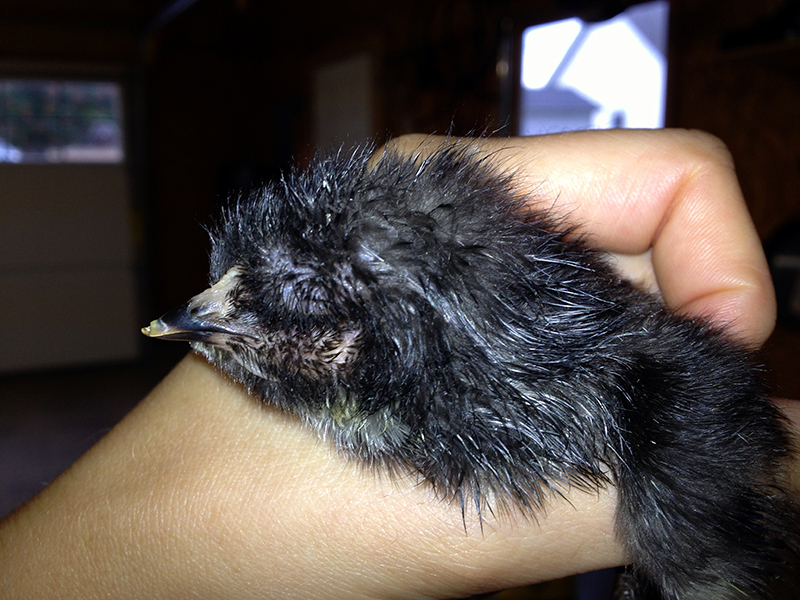
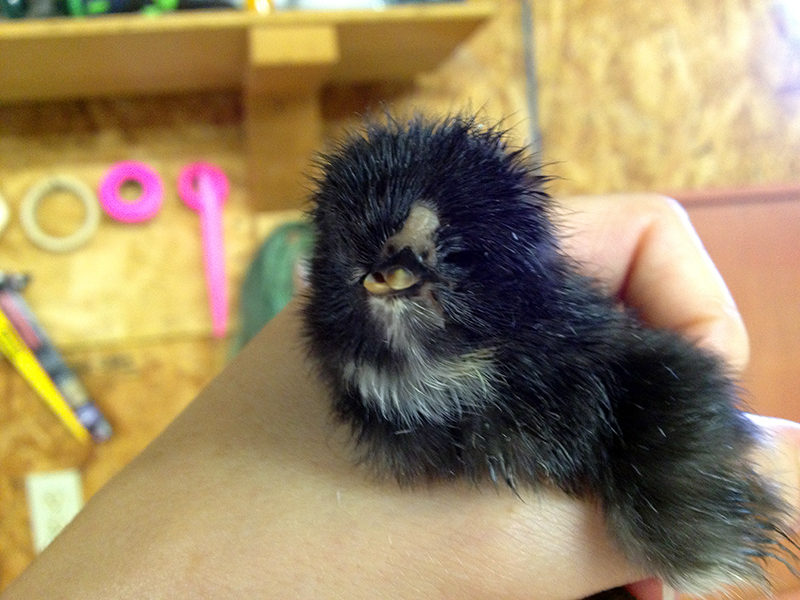
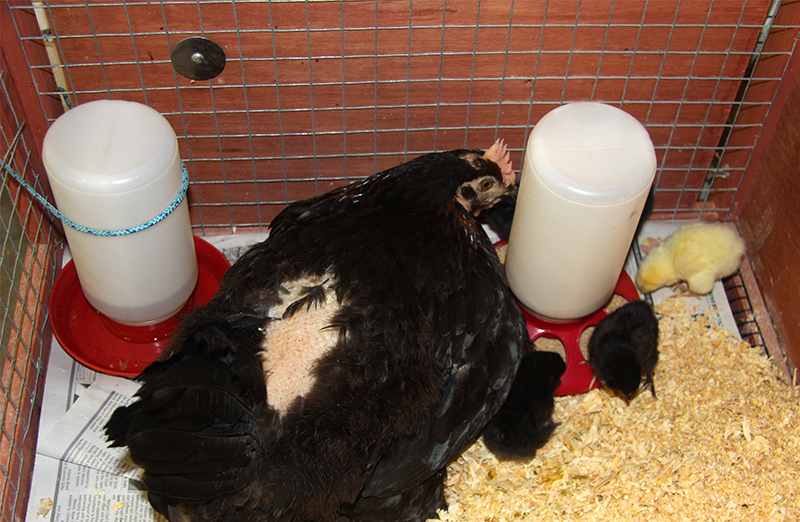
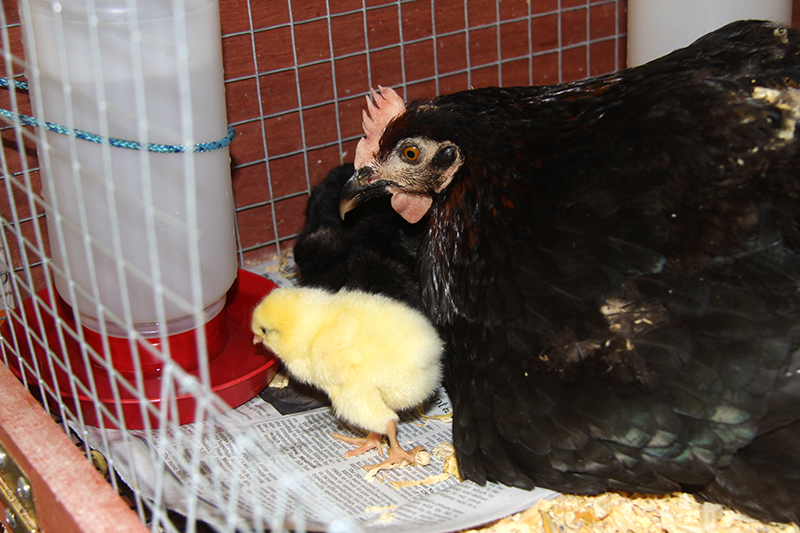
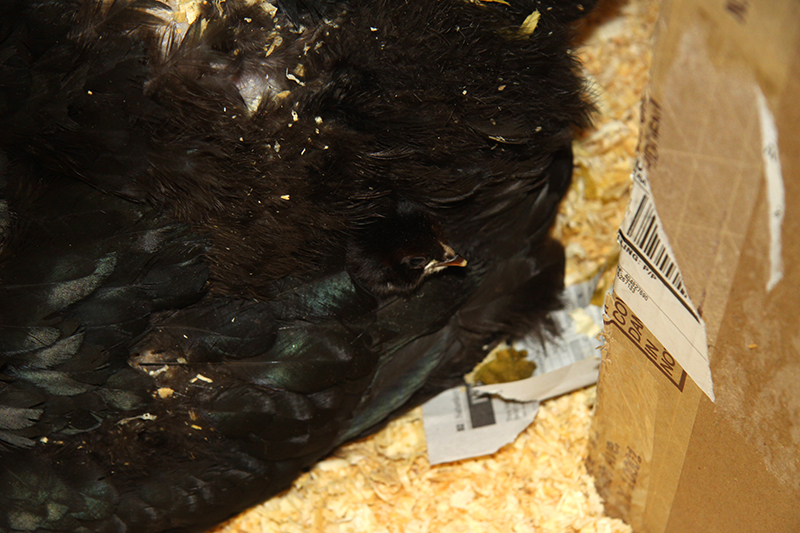
How sad for the little deformed chick. But I guess that is part of life.
Having never been around chickens myself, I am learning how much work they are! I had entertained the thought of raising egg layers myself, but I am now thinking I will just live vicariously through you and buy my eggs from the farmer down the road!